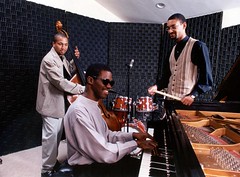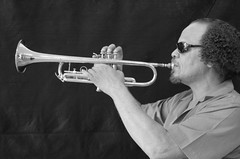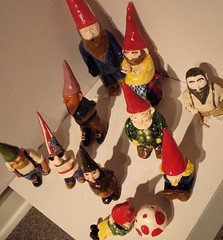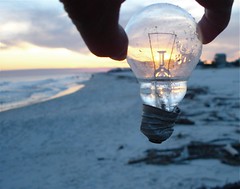Thursday, September 29, 2011
Wednesday, September 28, 2011
Group projects: Dia de los Muertos, papier mache, video, story time, etc
Group projects are an experiment on my part designed to bring more action and appreciation for arts production to Fine Arts survey. The idea is to take some class time and combine it with homework to produce an artful exhibit.
Students will be allowed to work during classroom time as long as they have the materials and exhibit enough organization to satisfy the educational standards of your teacher.
Be aware that as it is an experiment I may have to make adjustments to the schedule.
The due date for all projects will be Tues, Oct 18.
15 pts ea student.
5 pts bonus for early completion.
Students will be allowed to work during classroom time as long as they have the materials and exhibit enough organization to satisfy the educational standards of your teacher.
Be aware that as it is an experiment I may have to make adjustments to the schedule.
The due date for all projects will be Tues, Oct 18.
15 pts ea student.
5 pts bonus for early completion.
The Artful Portrait Project
Criteria -
- dramatic side lighting - see Rembrandt lighting.
- black & white
- matted
- titled and signed
- 5X7 or 8X10
- 3 pieces
- 15 pts
- campus exhibit / online exhibit
Due in class on Oct 10.
- dramatic side lighting - see Rembrandt lighting.
- black & white
- matted
- titled and signed
- 5X7 or 8X10
- 3 pieces
- 15 pts
- campus exhibit / online exhibit
Due in class on Oct 10.
Trumpet player Don Crenshaw / Dirty Red, Shreveport
Trumpets are among the oldest musical instruments,[1] dating back to at least 1500 BCE.
They are played by blowing air through closed lips, producing a "buzzing" sound which starts a standing wave vibration in the air column inside the trumpet.
The typical trumpet is a B flat, piston valve horn.
The bronze and silver trumpets from Tutankhamun's grave in Egypt, bronze lurs from Scandinavia, and metal trumpets from China date back to 1500 BCE.[2] Trumpets from the Oxus civilization (3rd millennium BCE) of Central Asia have decorated swellings in the middle, yet are made out of one sheet of metal, which is considered a technical wonder.[3] The Moche people of ancient Peru depicted trumpets in their art going back to 300 CE.[4]
The earliest trumpets were signaling instruments used for military or religious purposes, rather than music in the modern sense;[5] and the modern bugle continues this signaling tradition.
In medieval times, trumpet playing was a guarded craft, its instruction occurring only within highly selective guilds. The trumpet players were often among the most heavily guarded members of a troop, as they were relied upon to relay instructions to other sections of the army.
piccolo trumpet
pocket trumpet
cornet
flugelhorn
slide trumpet
bugle
bass trumpet
They are played by blowing air through closed lips, producing a "buzzing" sound which starts a standing wave vibration in the air column inside the trumpet.
The typical trumpet is a B flat, piston valve horn.
The bronze and silver trumpets from Tutankhamun's grave in Egypt, bronze lurs from Scandinavia, and metal trumpets from China date back to 1500 BCE.[2] Trumpets from the Oxus civilization (3rd millennium BCE) of Central Asia have decorated swellings in the middle, yet are made out of one sheet of metal, which is considered a technical wonder.[3] The Moche people of ancient Peru depicted trumpets in their art going back to 300 CE.[4]
The earliest trumpets were signaling instruments used for military or religious purposes, rather than music in the modern sense;[5] and the modern bugle continues this signaling tradition.
In medieval times, trumpet playing was a guarded craft, its instruction occurring only within highly selective guilds. The trumpet players were often among the most heavily guarded members of a troop, as they were relied upon to relay instructions to other sections of the army.
piccolo trumpet
pocket trumpet
cornet
flugelhorn
slide trumpet
bugle
bass trumpet
Decorative items that seem to be art but are unoriginal and cheesy: it's kitsch
Kitsch refers to non-original art-like material that has some of the qualities of art. An example: reproductions of the Blue Dog by esteemed Louisiana artist George Rodrigue.
While your teacher is proud that his house is full of original art, he must admit that he has kitsch, too - and it is dear to him. Examples include numerous statuettes of Buddha and Ganesh.
Kitsch /kɪtʃ/ is a term of German or Yiddish origin, says Wikiepdiia, that has been used to categorize art that is considered an inferior, tasteless copy of an existing style.
The contemporary definition of kitsch is derogatory, denoting works executed to pander to popular demand alone and purely for commercial purposes rather than works created as self-expression by an artist.[2] The term is generally reserved for unsubstantial and gaudy works that are calculated to have popular appeal and are considered pretentious and shallow rather than genuine artistic efforts.
Your teacher's parents had a reproduction of an 18th century painting of Venice ("The Palace of the Doge") over the sofa in the living room.
"Nice try, Mom."
It was nicely-framed kitsch.
While your teacher is proud that his house is full of original art, he must admit that he has kitsch, too - and it is dear to him. Examples include numerous statuettes of Buddha and Ganesh.
Kitsch /kɪtʃ/ is a term of German or Yiddish origin, says Wikiepdiia, that has been used to categorize art that is considered an inferior, tasteless copy of an existing style.
The contemporary definition of kitsch is derogatory, denoting works executed to pander to popular demand alone and purely for commercial purposes rather than works created as self-expression by an artist.[2] The term is generally reserved for unsubstantial and gaudy works that are calculated to have popular appeal and are considered pretentious and shallow rather than genuine artistic efforts.
Your teacher's parents had a reproduction of an 18th century painting of Venice ("The Palace of the Doge") over the sofa in the living room.
"Nice try, Mom."
It was nicely-framed kitsch.
Thursday, September 22, 2011
"Equal day and equal night:" the equinox
An equinox occurs twice a year, when the tilt of the Earth's axis is inclined neither away from nor towards the Sun, the center of the Sun being in the same plane as the Earth's equator. The term equinox can also be used in a broader sense, meaning the date when such a passage happens. The name "equinox" is derived from the Latin aequus (equal) and nox (night), because around the equinox, the night and day have approximately equal length.
There are harvest festivals across the globe that coincide with the autumnal equinox.
There are harvest festivals across the globe that coincide with the autumnal equinox.
Ska-boom: a quiz upon the basic tenets of jazz

Jazzing the orchestra with the Marcus Roberts Trio and the Shreveport Symphony Orchestra Sat, Sept 16
Originally uploaded by trudeau
1. First city of jazz: __ __.
2. Second city of Jazz (and of the US in general): __ .
3. Third city to which the fathers of jazz - such as Joe Oliver, Louis
Armstrong and Jellyroll Morton - relocated: __ __ .
4. Movement of impoverished black Americans from the farms of the Deep
South to urban centers of Upper Midwest and Northeast: a) diplomacy b)
dispora c) displacement d) dislocation .
5. Approximate date for the birth of jazz: a) 1800 b) 1850's c)
1900 d) 1920's.
6. Name given to the place in New Orleans where slaves gathered on
Sundays: a) river levees b) Ashanti circle c) Place Congo d) Vieux
Carre.
7. Louisiana term for people of mixed ethnic background, esp. a
mixture of French, Spanish, native American and Afro-Caribbean: __ .
8. Gens de couleur libre was a special ethnic category in NO. It
indicated a person who was African-American, yet not a slave. T / F
9. Another name for the historic French Quarter is Vieux Carre; it
means: a) Spanish Quarter b) Old Quarter c) French District d)
Slave Quarters .
10. A radical change in his instrument's shape was the signature of
bebop jazz artist Dizzy Gilespie. His instrumentwas the ____ .
11. Gillespie, Ella Fitzgerald and other jazzers offered vocal
improvisation with random vocables and syllables or without words at
all. This is called __ singing.
12. World War I and the Immigration Act of 1924 halted the flow of
European immigrants to the emerging industrial centers of the
Northeast and Midwest, causing shortages of workers in the factories
and openings for immigrating African-Americans. T / F
13. Chronological order of the development of jazz: a) Dixieland,
big band-style swing, bebop, Latin jazz, free jazz b) big band-style
swing, Dixieland, bebop, Latin jazz, free jazz c) bebop, Dixieland,
big band-style swing, Latin jazz, free jazz
14. In jazz the skilled performer will interpret a tune in very
individual ways, never playing the same composition exactly the same
way twice. Thus while jazz may be difficult to define, ______ is
clearly one of its key elements.
a) swing b) improvisation c) syncopation d) concentration.
1. New Orleans
2. Chicago
3. NYC (Harlem is not a city; it is a neighborhood in NYC)
4. diaspora
5. 1900
6. Place Congo, or Congo Square
7. Creole
8. T
9. Old Quarter
10. trumpet
11.scat
12. T
13. Dixieland, swing, bebop, etc
14. improvisation
Subscribe to:
Posts (Atom)









